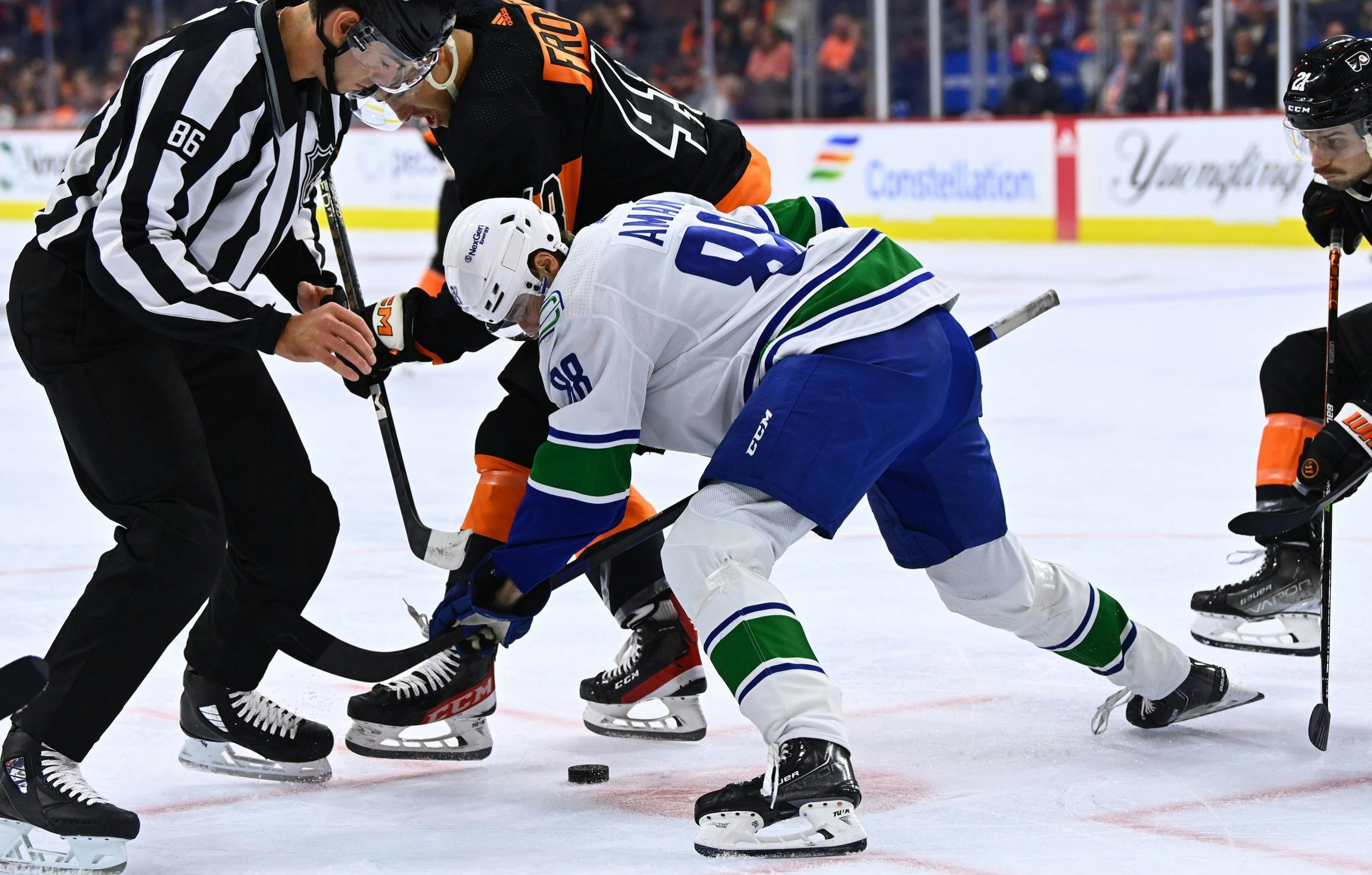What a difference a few months can make, especially when those months are of the sort that the Vancouver Canucks just lived through.
Coming into the 2022/23 season, expectations for the Canucks were set at various heights depending on one’s tendency toward optimism, but it’s safe to say that no one saw things going quite as disastrously as they have.
Most understood that making the playoffs could be a longshot for the Canucks this year, and that they would experience some struggles along the way as they approached that goal. But, then, it’s not that the Canucks have struggled that has been so disappointing, it’s the ways in which they have struggled.
The 2021/22 Canucks had a reputation of being a team that contended from the net out; the 2022/23 Canucks have had major issues in the crease.
The team’s bottom-six was completely refreshed this offseason, only to underperform even last year’s set.
The segment of the team that has most drastically underperformed to expectations, however, has been the Canucks’ centre corps.
Coming into 2022/23, there were those who suggested that the Canucks might have the single best 1-2-3 punch down the middle in the entire NHL.
The depth chart was to be headed by JT Miller, coming off a 99-point season and a contract extension to match.
Elias Pettersson was expected to challenge Miller for that 1C designation all season long.
Meanwhile, captain Bo Horvat stood out as the best 3C in the league, a luxury that should have allowed the Canucks to set up three scoring lines.
The 4C position was expected to be claimed by one of Curtis Lazar, Dakota Joshua, or Linus Karlsson. In the end, nobody really impressed and Nils Aman got the job, almost by default — but the 4C job is far from the biggest issue at hand.
The biggest issue at hand is that, within the span of a few months, the Canucks’ greatest position of organizational strength has become yet another weakness in need of short- and long-term fixing.
We’ll start with the good news: if he wasn’t already there before, Elias Pettersson has indisputably ascended to the status of a true 1C. On pace for more than 100 points, Pettersson is playing like a genuine superstar, and it looks sustainable. In him, the Canucks should have the 1C position locked in until at least 2030 — provided they don’t bungle the next round of contract negotiations.
That’s all of the good news.
The Miller situation offers far more cause for concern. It’s not just that Miller’s production has predictably regressed this season, with him currently on pace for about 70 points. It’s that, even within that context, Miller has experienced noticeable difficulty at centre all year long, and has looked far more comfortable and effective on the wing.
That shouldn’t come as much of a surprise. Prior to last season, Miller had spent the majority of his career on the wing, and most objective observers recognized that 2021/22 was going to be a bit of an anomalous season for him.
But then the Canucks went and paid Miller like he was going to continue to play like a 1C for the next seven years. If he reverts full-time to a sub-PPG winger, his contract becomes an albatross before it even takes effect.
And the Canucks’ centre depth suffers as a result.
Now, in a vacuum, we should be talking about Horvat’s 2022/23 season in the “good news” section. He is, after all, fifth in the entire NHL in goals, and has dramatically outplayed his spot on the depth chart this season.
Forget 3C. The way Horvat is playing, he’s a 1C on several teams in the league this year, and definitely among the cream of the crop when it comes to 2Cs.
So, what’s the problem?
The problem is that there’s writing all over the walls of Rogers Arena, and it all says that Horvat is playing through his last season as a Vancouver Canuck.
Should Horvat be traded or walk as a UFA in the summer, suddenly the situation looks quite dire. A team that went into 2022/23 boasting of their 1-2-3 centre punch could find themselves entering the 2023/24 season with a decidedly less-inspiring group of pivots.
Pettersson will still be the 1C. But if Miller stays on the wing (or heads elsewhere) and Horvat leaves town, who will be backing him up?
The Canucks could be looking at a 2-4C depth chart comprised of some blend of Aman, Lazar, Joshua, Jack Studnicka, Sheldon Dries, and etcetera. And nobody is going to make the mistake of calling that the best centre depth in the league. Take Pettersson out of the equation, and it might not even be the best centre depth in the AHL.
Even worse, the Canucks don’t have many centre prospects to speak of, so there’s little hope of anyone rising up from within the organization to steal a spot. There’s the aforementioned Karlsson, who is having a fine rookie pro season in Abbotsford, but he’s another bottom-six type at best. After that, it’s the still-unsigned Aidan McDonough, who might not even stay at centre ice when he hits the pros.
After that, it’s no one.
All of which adds up to the Canucks needing to go outside of the organization to solve their centre issues in the years to come. Which is unfortunate, because aside from RHDs, quality centres tend to be the most expensive assets to acquire in hockey.
If the Canucks were wise, they’d start the process of acquiring centres now, making such assets a target as they start to deal away their pending UFAs.
Then again, like quality centres, wisdom isn’t always available in abundance these days.


